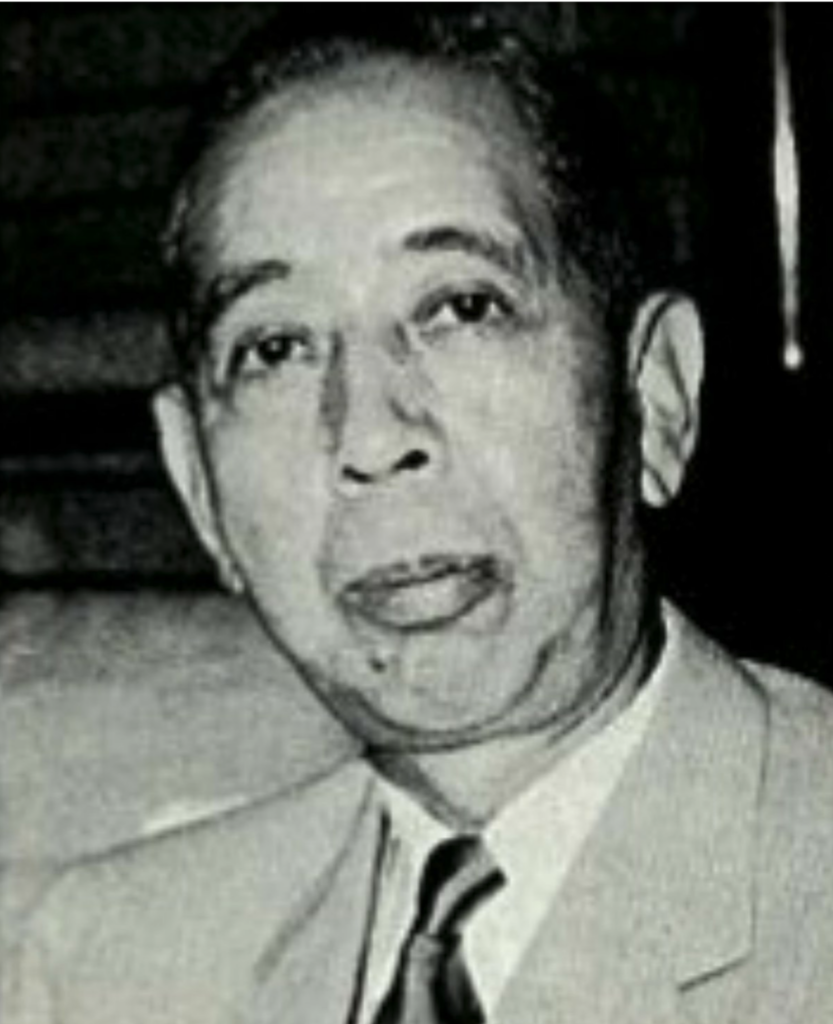
[This article follows from CovertAction Magazine’s series exposing the sordid history of the CIA.—Editors]
In early 1958, President Dwight Eisenhower authorized the CIA to provide secret campaign funds to Japanese Prime Minister Nobusuke Kishi and other select members of Japan’s Liberal Democratic Party (LDP), which favored close integration with the U.S during the Cold War.
According to historian Michael Schaller, between 1958 and 1960 around $30 million was disbursed to Kishi and his LDP colleagues through private American citizens who advised Defense Secretary John Foster Dulles and State Department consultant George F. Kennan, the father of the Cold War containment doctrine, on Japan policy.[1]

The secret funds were allegedly obtained from the sale of rare metals and diamonds that had come under allied control at the end of World War II and looted Japanese gold seized in the Philippines under the oversight of Air Force General Edward Lansdale, an Office of Strategic Services (OSS) propagandist appointed as a liaison to a Filipino-American commando Severino Garcia Diaz Santa Romana. Romana tortured the driver of Japanese General Tomoyuki Yamashita who revealed to him where the gold had been hidden.[2]
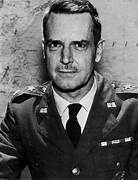
The American conduits for the secret funds to Kishi and the LDP included Newsweek foreign affairs editor Harry Kern, an identified CIA asset, Newsweek Tokyo Bureau Chief Compton Packenham; corporate lawyer James L. Kauffman, retired U.S. ambassador Joseph C. Grew, and Eugene Dooman, a retired diplomat who served under Grew in Tokyo.
They were all affiliated with a group called the American Council on Japan (ACJ), which had ties with Japanese business and political leaders who had been purged at the end of World War II because of their support for Japanese militarism.
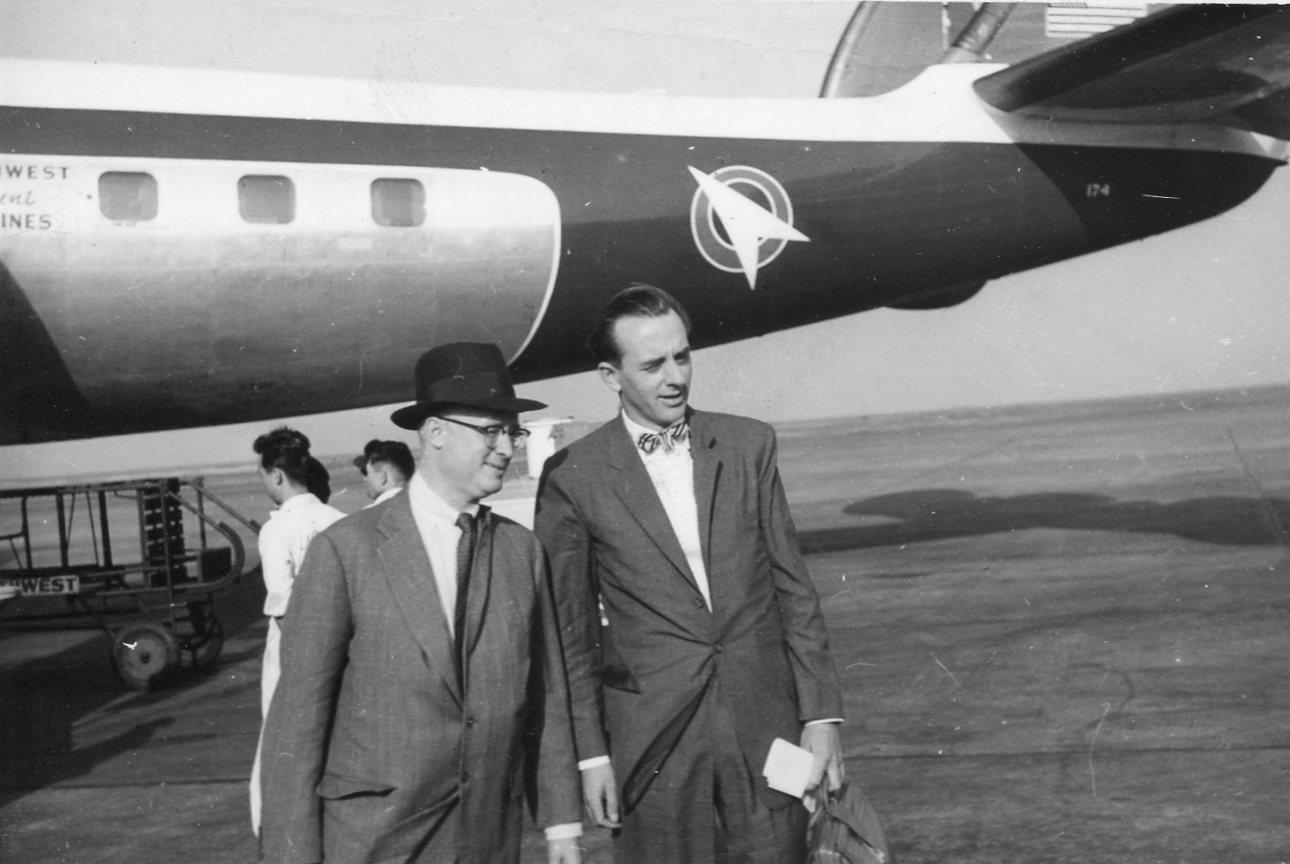
The ACJ had championed the “reverse course” policy of the U.S. military occupation under General Douglas MacArthur, which abandoned any effort to promote economic equality and democratization and instead focused on suppressing communism and the political left in the wake of the 1949 Chinese Communist revolution.
Wall Street and the Rockefeller family favored this latter strategy as they sought to enhance the prospects of American investment in Japan and “Open Door” policy throughout Southeast Asia.
Kishi, who was described by journalists Sterling and Peggy Seagrave as “resembling a salamander,” was a particular favorite of the ACJ because he had said that, “for the next 25 years, it would be in Japan’s best interest to cooperate closely with the U.S.”[3]
This outlook differed from Ichiro Hatoyama, Japan’s Prime Minister from 1954 to 1956, who had been reluctant to amend the “no war” clause of Japan’s constitution, speed rearmament, accept strict limits on trade with Communist China and accept a security treaty that would allow for the U.S. to retain military bases in Japan indefinitely.[4]
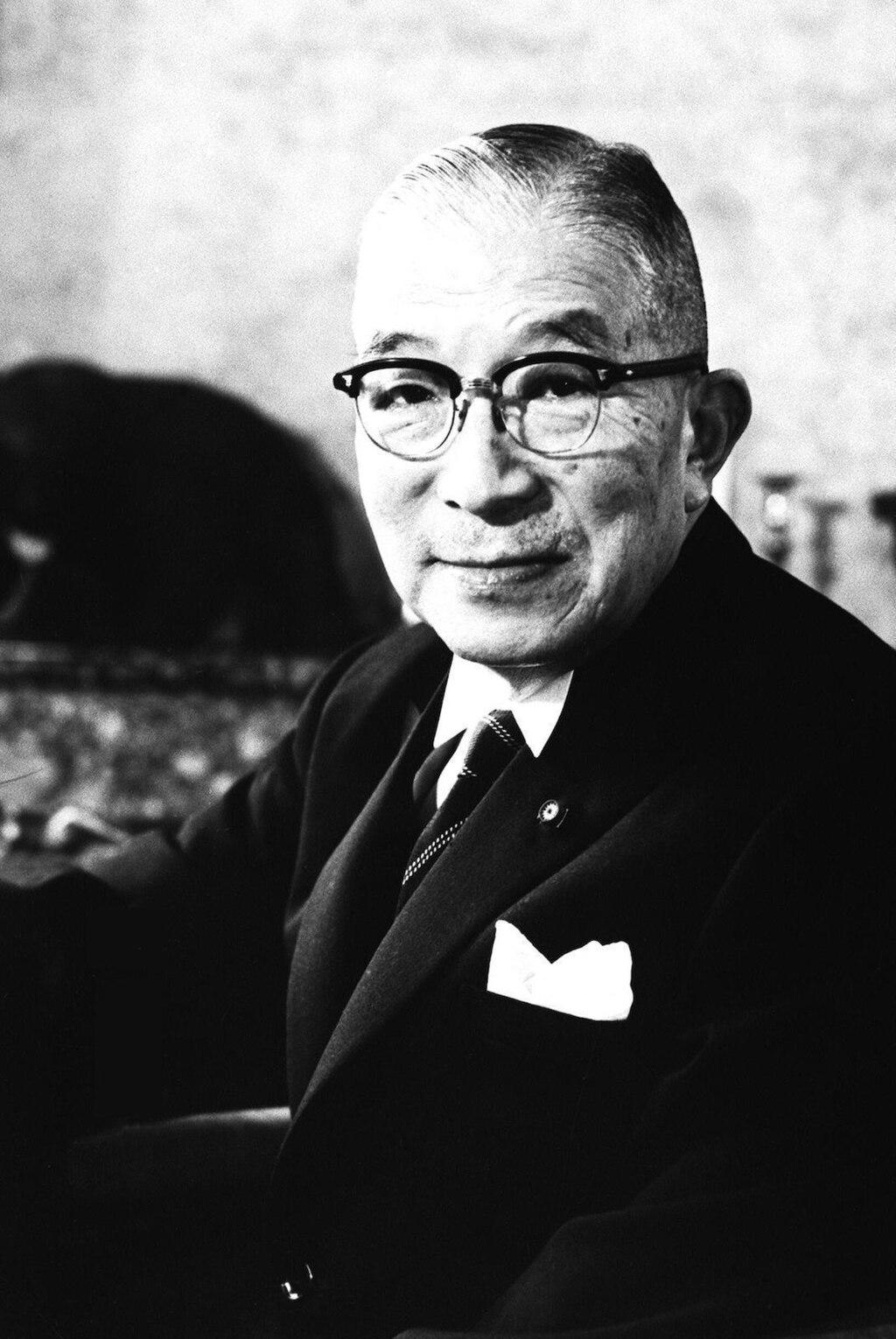
In January 1960, Kishi signed the security treaty with the U.S., pushing it through the Diet in the absence of the opposition and directing police repression of left-wing protesters who were against it. He also used parliamentary maneuvers to remove from the Diet building members of Japan’s Socialist Party (JSP) participating in a sit-down strike.[5]
During Kishi’s rule (1957-1960), the U.S. military presence in Okinawa, then under direct U.S. military occupation, doubled.[6] Kishi was further valued by U.S. leaders as the only Japanese politician capable of defeating the JSP.
After protests backed by the JSP broke out over U.S efforts to extend a runway at the Tachikawa Air Force base on the outskirts of Tokyo, Kishi told U.S. ambassador Douglas MacArthur II that the government “must deal firmly with leftists.”
MacArthur II in turn said that in Kishi “we have at last an able leader of Japan. He indicates he wants to make a bold new start with us. . . . He has indicated that his basic views on the world situation, the Communist threat in the Far East, and Japan as a major Communist target, are the same as ours. . . . I think we can do business with him.”
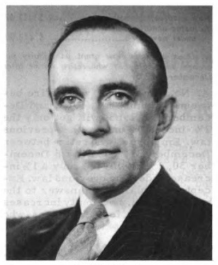
The JSP had gained considerable support with its calls to a) break the dominance of the business conglomerates (zaibatsu) that were behind Japan’s militarists in World War II; b) improve relations with Communist China; and c) rid Japan of its humiliating military pact with the U.S.[7]
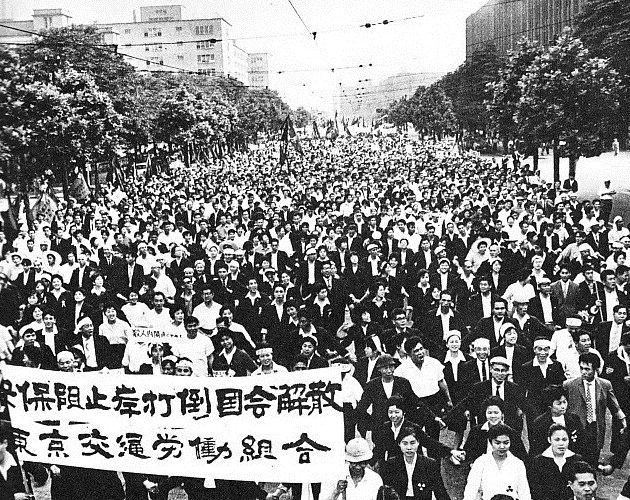
In an attempt to weaken the JSP, the CIA supported right-wing elements within the party, affecting a split with the formation of the Democratic Socialist Party.[8]
The CIA also infiltrated the militant public sector trade union, Sohyo, the JSP’s main organizing base, encouraging its members to adopt the strident anti-communist stance of the U.S. labor movement and to either support right-wing JSP splinter groups or the LDP.[9]
Japan as Superdomino
Japan was the linchpin of U.S. foreign policy in Southeast Asia, what historian John Dower called “the super-domino”, which was envisioned as a junior partner to the U.S. in the Cold War and counterweight to Communist China.[10]
George Kennan wrote that Japan must be redeveloped as the “cornerstone of the U.S.-led Pacific security system,” with the radically changed world situation after the 1949 Chinese Communist Revolution requiring that Japan be “made internally stable, amenable to American leadership and industrially revived as a producer of consumer goods and secondarily of capital goods.”
To help fulfill this strategy, CIA operations in Korea increased dramatically during the Korean War and included efforts to manipulate Japanese public opinion through secret financing of the production of movies, TV and radio programs, books and magazines.[11]
A key CIA asset, Shoriki Matsutaro, a class A war criminal code-named PODAM, aided the U.S. propaganda campaign after establishing Japan’s first private television network, Nippon TV.[12]
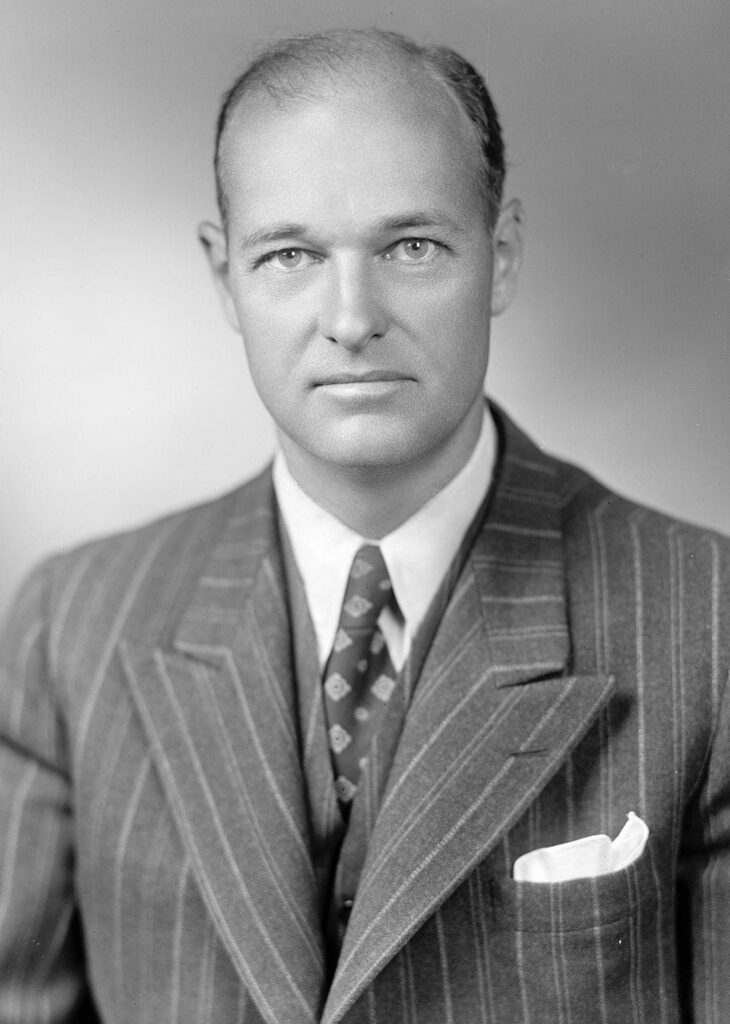
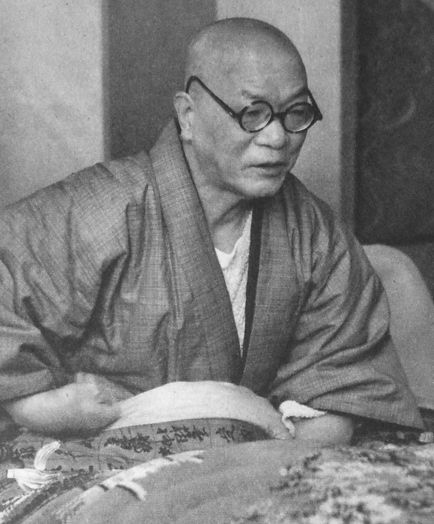
“Hospitably Treated War Criminal”
Characterized by historian Brad Williams as “the hospitably treated war criminal,” Kishi is believed to have been first recruited as a CIA informant in 1953 when he was elected to the Japanese diet and began providing inside information to the CIA on Japanese politics.
One of Kishi’s top supporters, Kaya Okinori, the former Finance Minister in Hideki Tojo’s war Cabinet who served with him in Sugamo Prison after being convicted of war crimes, was also recruited as a CIA “asset” (code-name POSSONNET-1).[13]
A follower of Japanese ultra-nationalist philosopher Kita Ikki whose family had participated in the Meiji restoration, Kishi had first come to the attention of American officials shortly before the Pearl Harbor attacks.
A rising star in Japan’s Ministry of Commerce and Industry at the time, he struck up a friendship with Joseph Grew, the U.S. ambassador who said that “Kishi has always been one of my highly valued friends in Japan and nothing can ever change my feeling of personal friendship and affection for him.”[14]

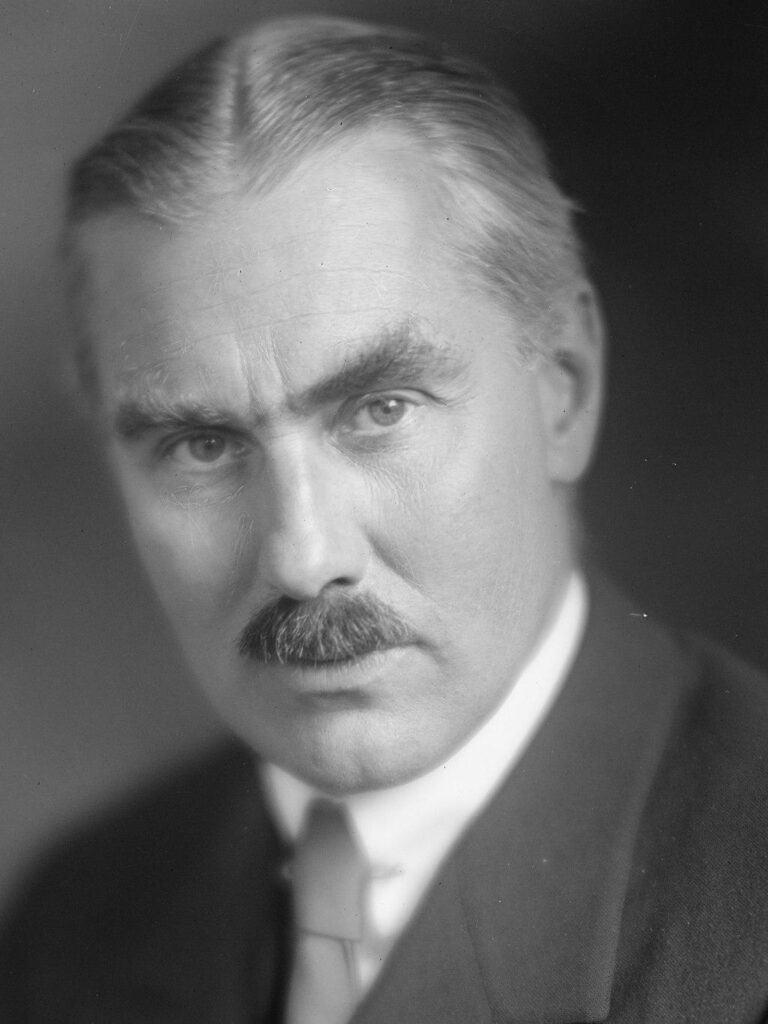
Grew’s affection for Kishi came in spite of the fact that he had helped to enact national war mobilization and thought control acts under Prince Konoye and Hideki Tojo.[15]
After the war, Kishi spent three years in Sugamo Prison as a war criminal, and was then groomed for higher office by members of the ACJ, who tutored him in English, served as his public relations consultant, and arranged trips for him to Europe and the U.S.
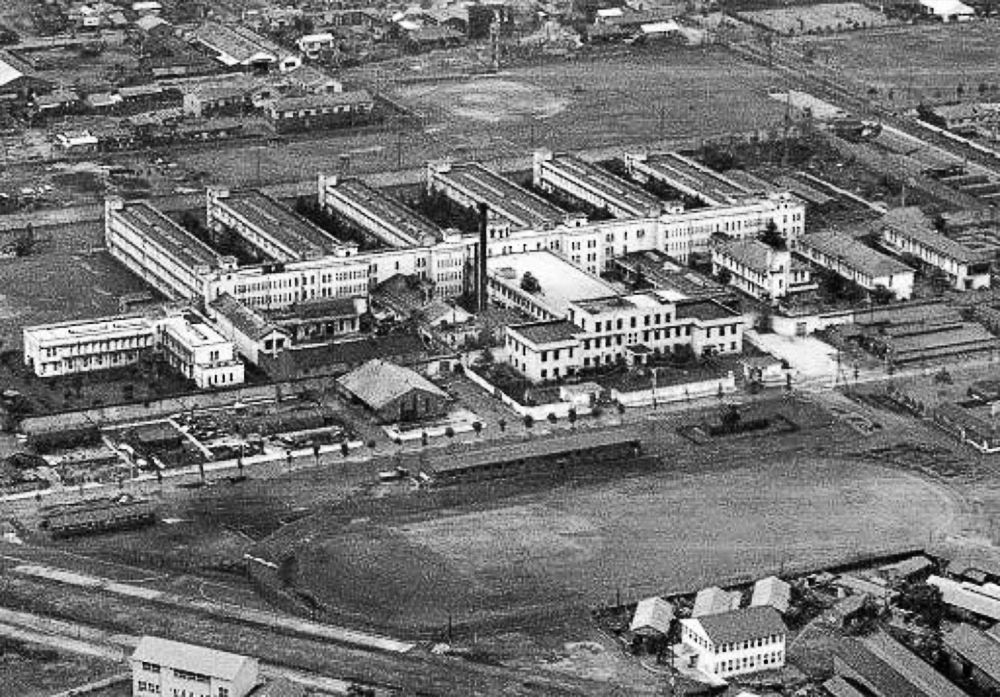
Monster of Showa
Kishi had been a member of General Hideki Tojo’s Cabinet in 1941, where he co-signed the declaration of war against the United States.
Kishi’s nickname during the war was “the monster of Showa.”[16]
In 1937, after he was appointed Japanese-occupied Manchukuo’s Deputy Minister of Industrial Development and given complete control of Manchukuo’s economy, Kishi issued a decree mandating the use of slave labor, stating that money to pay the workers was not available.
Between 1938 and 1945, about one million Chinese were rounded up and taken as slaves to Manchukuo. The dire conditions there were exemplified by the Fushun coal mine, which employed about 40,000 miners, 25,000 of whom died annually and were replaced by new slaves. Four million Chinese were used as slave laborers in Manchukuo overall in the war years and more than 40% of them died, making Kishi responsible for the deaths of approximately 1.5 million Chinese slave workers.[17]
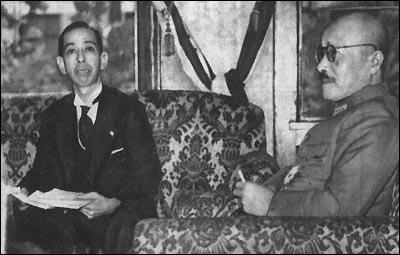
After his appointment as Minister of Munitions in October 1941, Kishi continued to apply his Manchukuo methods and was deeply involved in making hundreds of thousands of Koreans and Chinese work as slaves in Japan’s factories and mines. Additionally, Chinese and Korean girls and women were forced to become sex slaves, or “comfort women,” for members of the Japanese army.[18]
Kishi believed the Chinese were only good for “being robot slaves,” or “mechanical instruments of the imperial Army, non-human automatons, absolutely obedient to their Japanese masters.” Chinese and Korean women were viewed as “disposable bodies,” to be used by Japanese men.[19]
Kishi’s crimes extended to his deep involvement in the Southeast Asian opium trade. The inscription on the tombstone of Hajime Satomi—Manchukuo’s ‘Opium King’—was written by Kishi.
The Manchukuo state opium monopoly used the Yakuza as opium distributors, the same criminal organization Kishi had used to terrorize Chinese slave workers into submission.[20]
Kishi was known for his skill in laundering money and as “the man who could move millions of yen with a single telephone call.”[21]
Washington’s Political Clan
Kishi’s criminal past was ignored and forgotten by U.S. leaders prone to support the most ruthless and unprincipled anti-communist leaders during the Cold War.
On June 20, 1957, Kishi was a guest of honor at the U.S. Senate where Vice President Richard Nixon called him a “great leader of the free world.”[22]
When Kishi flew to Washington three years later to sign the security treaty, President Eisenhower again welcomed him warmly and the American press lavished effusive praise on him.
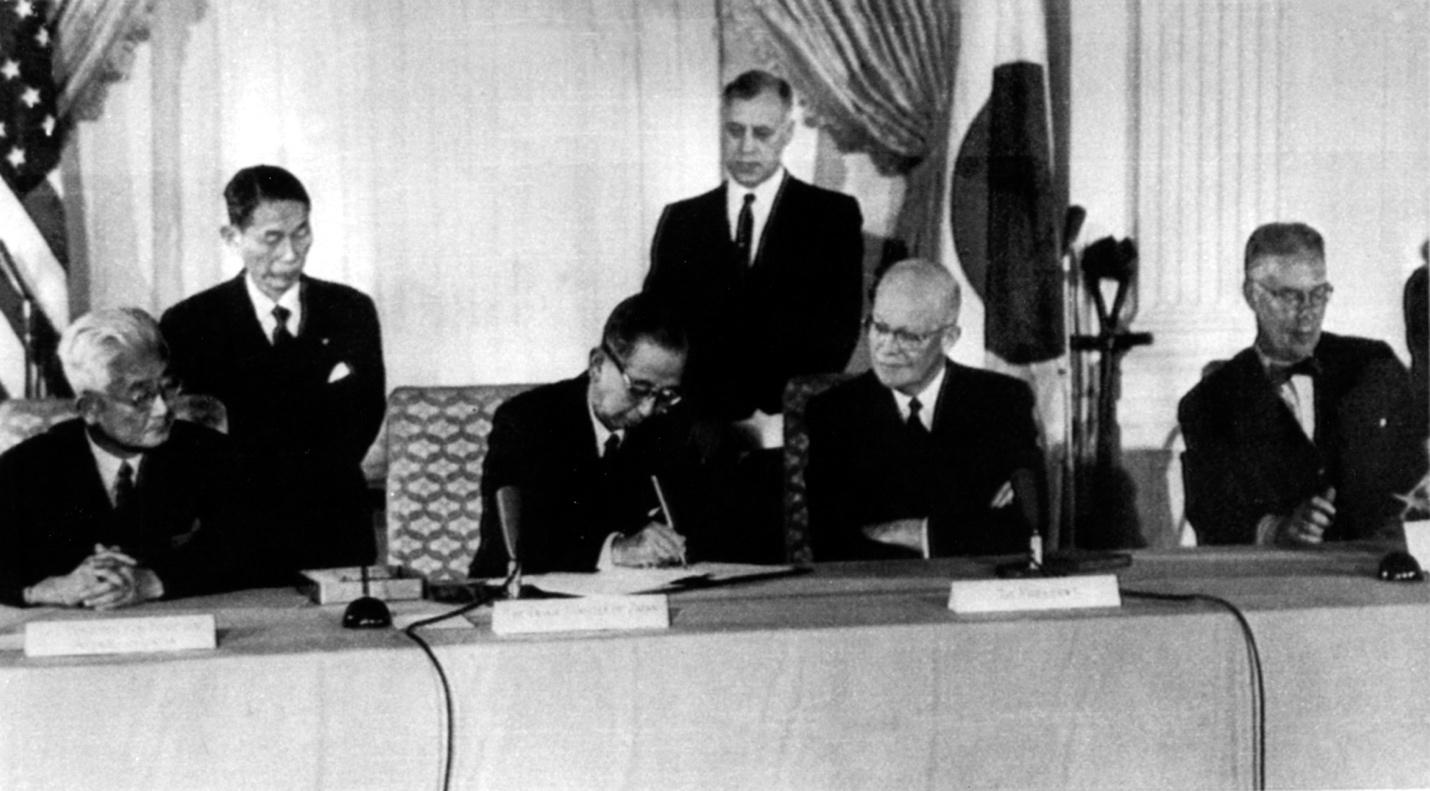
Time magazine graced its cover on January 25, 1960, with a portrait of a smiling Kishi against a background of humming industry. The Prime Minister’s “134 pound body,” Time noted, “packed pride, power and passion—a perfect embodiment of his country’s amazing resurgence.”
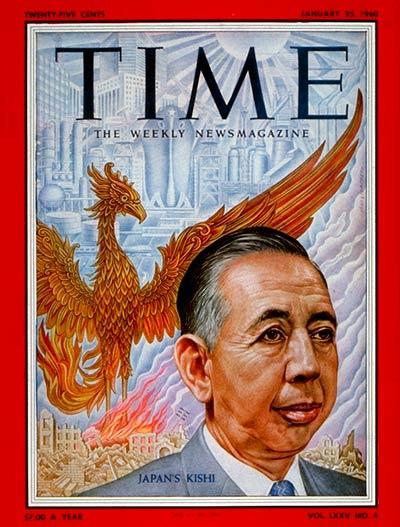
Newsweek trumpeted the arrival of a “friendly, savvy salesman from Japan,” editorializing that “the Sony transistor radio shipped to America symbolized the U.S. alliance with the ‘economic powerhouse of Asia.’”[23]
After Kishi was forced out of office because of the unpopularity of the 1960 security treaty, he was replaced by his brother, Eisaku Sato, who served as Japan’s second longest Prime Minister from 1964 to 1972.
Sato aroused popular indignation for maintaining Okinawa as a chief supply base for the U.S. war of aggression in Vietnam.[24] When he was given an honorary degree in November 1967 at Columbia, the Students For a Democratic Society (SDS) gave him a “Master of War” degree.
Kishi at this time was a member of the “Korean lobby,” which channeled funds to CIA backed General Park Chung Hee, who fulfilled a key function of the Korean War by integrating South Korea’s economy with Japan while ruling South Korea with an iron fist from 1961-1979.[25]
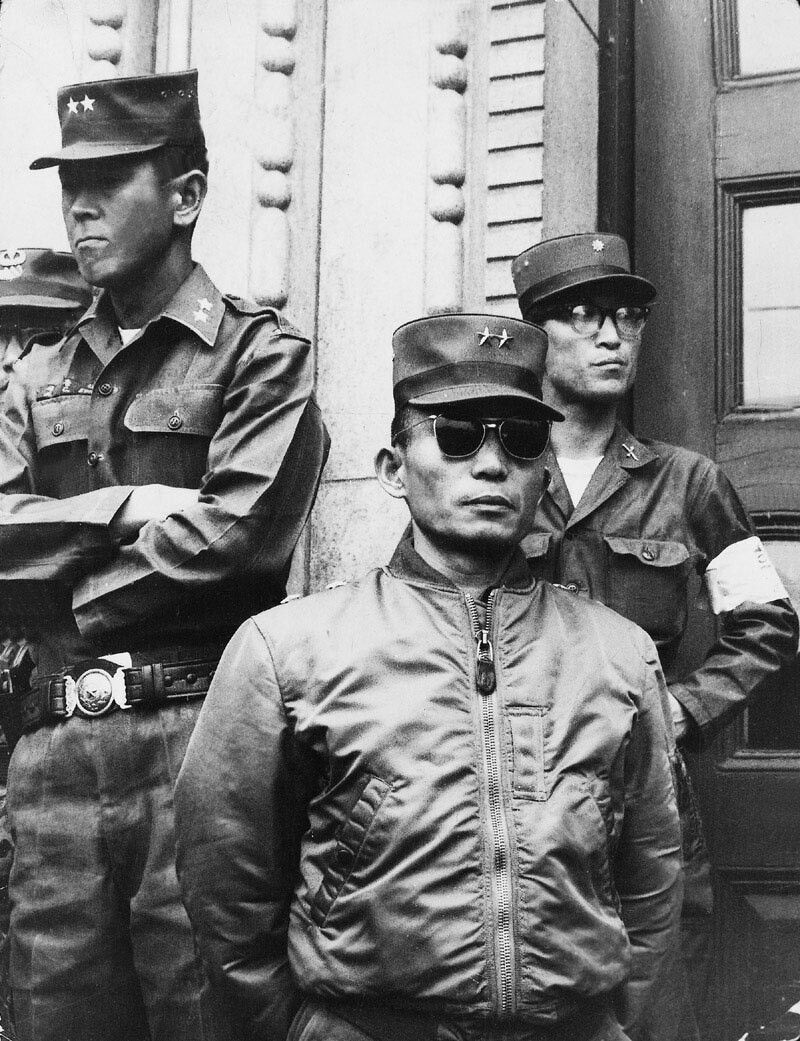
Japan’s longest serving Prime Minister today is Kishi’s grandson, Shinzo Abe, who held office from 2006 to 2007 and from 2012 to 2020 and was kingmaker of Japanese politics until his assassination in 2022.
Described by political scientist Koichi Nakano as “Washington’s Man in Japan,” Abe was fittingly known for his adoption of neoliberal economic policies and as a right-wing militarist who sought to revive Japan’s armed might and whitewash the brutality of Japanese imperialism’s past, including the crimes perpetrated by his grandfather.[26]
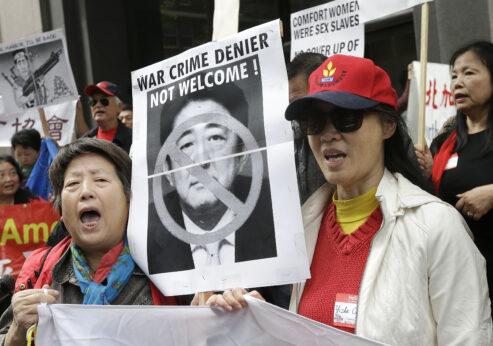
Abe even had himself pictured flying in a plane emblazoned with 731 on it, the number of the infamous Japanese imperial army unit that carried out sadistic biological warfare experiments on Chinese prisoners.[27]
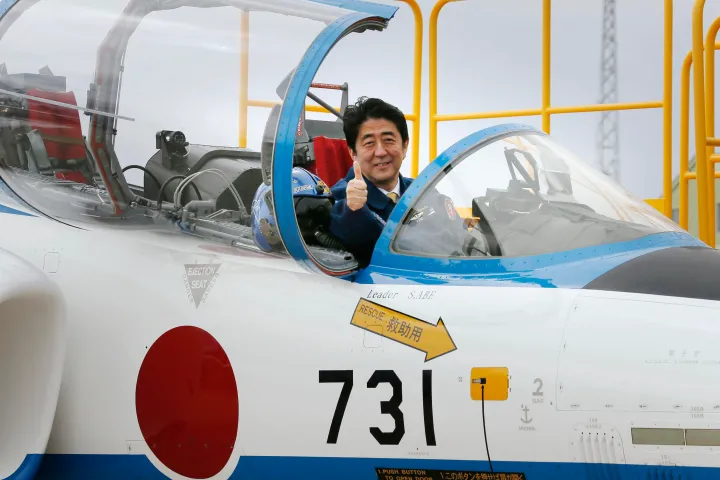

Sounding like Nixon and Eisenhower when talking about Kishi, Hillary Clinton, the architect of Obama’s pivot to Asia strategy, or military build-up that again considered Japan as a key strategic counterweight to China, called Abe a “great democrat”—even though he had embraced authoritarian practices. The Economist put Abe on its cover wearing a Superman costume.
This adulation fits a long pattern of lionization and support by U.S. political and media elites for the Kishi clan, whose dark skeletons have been effectively airbrushed from history.
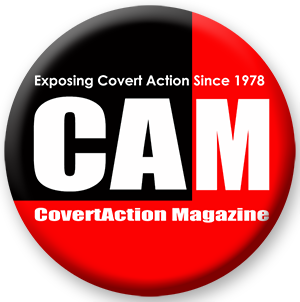
Michael Schaller, America’s Favorite War Criminal: Kishi Nobusuke and the Transformation of U.S.-Japan Relations (Japanese Policy Research Institute, July 1995); Brad Williams, “US Covert Action in Cold War Japan: The Politics of Cultivating Conservative Elites and Its Consequences,” Journal of Contemporary Asia, 50, 4 2020, 593-617. ↑
See Sterling and Peggy Seagrave, Gold Warriors: America’s Secret Recovery of Yamashita’s Gold (London: Verso, 2005). ↑
Schaller, America’s Favorite War Criminal. The Security treaty also granted Americans exceptional extraterritorial rights. ↑
Hatoyama’s efforts to negotiate a peace treaty with the Soviet Union drove Dulles particularly wild. ↑
Nicholas Evan Sarantakes, Keystone: The American Occupation of Okinawa and U.S.-Japanese Relations (College Station: Texas A&M Press, 2000), 91, 92. ↑
Gavan McCormack and Satoko Oka Norimatsu, Resistant Islands: Okinawa Confronts Japan and the United States (New York: Rowman & Littlefield, 2012), 80. ↑
Schaller, America’s Favorite War Criminal; Jeremy Kuzmarov, “Meet a Forgotten CIA Critic Who Presciently Characterized the Agency as a Cancer in 1970 Book,” CovertAction Magazine, April 17, 2023, https://covertactionmagazine.com/2023/04/17/meet-a-forgotten-cia-critic-who-presciently-characterized-the-agency-as-a-cancer-in-1970-book/. Kishi’s statements to Douglas MacArthur II and MacArthur’s comments are taken from Jennifer Miller, “Fractured Alliance: Anti-Base Protests and U.S.-Japanese Relations,” Diplomatic History, 38, 5 (2014), 980, 981.Williams, “US Covert Action in Cold War Japan: The Politics of Cultivating Conservative Elites and Its Consequences.” ↑
Walter LaFeber, The Clash: U.S.-Japanese Relations Throughout History (New York: W.W. Norton, 1997), 336. ↑
See John W. Dower, Embracing Defeat: Japan in the Wake of World War II (New York: W.W. Norton, 2000). ↑
Williams, “US Covert Action in Cold War Japan: The Politics of Cultivating Conservative Elites and Its Consequences.” The CIA station chief in the period of the Korean War was Harvey Overesch, a former Admiral from Lafayette, Indiana who had served as a naval attache in China. He replaced the CIA’s first station chief in Japan, Paul Blum, a New Yorker who was known as a bibliophile. ↑
Williams, “US Covert Action in Cold War Japan: The Politics of Cultivating Conservative Elites and Its Consequences.” Shoriki also owned major print media in Japan which was also used to promote U.S. Cold War propaganda. ↑
Williams, “US Covert Action in Cold War Japan: The Politics of Cultivating Conservative Elites and Its Consequences.” CIA informant in Japan, Ogata Taketora, was another class-A war criminal who had close relations with LDP leader Yoshida Shigeru dating back to the 1920s. The CIA gave Ogata a loan for his son to complete his graduate studies in the U.S. Predictably, Ogata opposed Hitoyama’s rapprochement with the Soviet Union and favored constitutional revisions to enable Japan’s remilitarization.The CIA also supported right-wing ultranationalist ↑
Schaller, America’s Favorite War Criminal. ↑
David W. Conde, CIA–Core of the Cancer (New Delhi: Entente Private Limited, 1970), 81. ↑
Schaller, America’s Favorite War Criminal. ↑
Fadi Lama, Why the West Can’t Win: From Bretton Woods to a Multipolar World (Atlanta: Clarity Press, 2023), 123. ↑
Schaller, America’s Favorite War Criminal. ↑
Lama, Why the West Can’t Win, 124. ↑
The Yakuza was founded by another CIA “asset,” Yoshio Kodama, who embodied with Kishi a connection between the CIA, Japan’s far-right and organized crime. ↑
Lama, Why the West Can’t Win, 124. According to journalists Sterling and Peggy Seagrave, Kishi helped himself to around $3 billion from the CIA’s secret M-Fund, derived from looted Japanese gold and treasure taken at the end of World War II, that was used to finance black operations in Japan and around Southeast Asia. Seagrave and Seagrave, Gold Warriors, 123.↑
Lama, Why the West Can’t Win, 128. ↑
Schaller, America’s Favorite War Criminal. ↑
McCormack and Norimatsu, Resistant Islands, 85. The authors discuss Sato’s secret agreement with Nixon that not only preserved U.S. military bases in Okinawa but also agreed to further nuclear cooperation with the U.S.. ↑
David W. Conde, “More Crimes of the Korean CIA,” 1973, David W. Conde Papers, University of British Columbia Special Collections. Park imprisoned over 100,000 South Koreans and executed many patriots, according to Conde. He also supported the U.S. war effort in Vietnam, sending thousands of South Korean troops who committed dozens of My Lai style massacres. ↑
Abe came to office pledging to make Japan “the most business-friendly country in the world” by repealing corporate regulations and worker protections, while reducing corporate taxes and raising taxes on everyone else. Abe’s attitude on Japan’s role during World War II—including denial of the sex slavery that the Japanese army forced on tens of thousands of women, minimizing or ignoring mass murders committed across China and Korea, the promotion of school textbooks covering up Japan’s crimes, and his frequent visits to a shrine honoring Japanese war criminals—put him at odds with much of the Japanese population. One of Abe’s main goals, which thanks to public pressure remains unfulfilled, was to repeal Article 9, the so-called “peace clause” of Japan’s constitution, which sought to outlaw war and forbid Japan from ever again becoming an aggressor. Abe’s push to repeal Article 9 was a family tradition. His grandfather also sought to undermine the document when he was in power from 1957 to 1960. ↑
For an overview of Unit 731, see Robert F. Kennedy Jr., The Wuhan Cover-Up and Terrifying Bioweapons Arms Race (New York: Skyhorse, 2023), 23-31. ↑
CovertAction Magazine is made possible by subscriptions, orders and donations from readers like you.
Blow the Whistle on U.S. Imperialism
Click the whistle and donate
When you donate to CovertAction Magazine, you are supporting investigative journalism. Your contributions go directly to supporting the development, production, editing, and dissemination of the Magazine.
CovertAction Magazine does not receive corporate or government sponsorship. Yet, we hold a steadfast commitment to providing compensation for writers, editorial and technical support. Your support helps facilitate this compensation as well as increase the caliber of this work.
Please make a donation by clicking on the donate logo above and enter the amount and your credit or debit card information.
CovertAction Institute, Inc. (CAI) is a 501(c)(3) non-profit organization and your gift is tax-deductible for federal income purposes. CAI’s tax-exempt ID number is 87-2461683.
We sincerely thank you for your support.
Disclaimer: The contents of this article are the sole responsibility of the author(s). CovertAction Institute, Inc. (CAI), including its Board of Directors (BD), Editorial Board (EB), Advisory Board (AB), staff, volunteers and its projects (including CovertAction Magazine) are not responsible for any inaccurate or incorrect statement in this article. This article also does not necessarily represent the views the BD, the EB, the AB, staff, volunteers, or any members of its projects.
Differing viewpoints: CAM publishes articles with differing viewpoints in an effort to nurture vibrant debate and thoughtful critical analysis. Feel free to comment on the articles in the comment section and/or send your letters to the Editors, which we will publish in the Letters column.
Copyrighted Material: This web site may contain copyrighted material the use of which has not always been specifically authorized by the copyright owner. As a not-for-profit charitable organization incorporated in the State of New York, we are making such material available in an effort to advance the understanding of humanity’s problems and hopefully to help find solutions for those problems. We believe this constitutes a ‘fair use’ of any such copyrighted material as provided for in section 107 of the US Copyright Law. You can read more about ‘fair use’ and US Copyright Law at the Legal Information Institute of Cornell Law School.
Republishing: CovertAction Magazine (CAM) grants permission to cross-post CAM articles on not-for-profit community internet sites as long as the source is acknowledged together with a hyperlink to the original CovertAction Magazine article. Also, kindly let us know at info@CovertActionMagazine.com. For publication of CAM articles in print or other forms including commercial internet sites, contact: info@CovertActionMagazine.com.
By using this site, you agree to these terms above.
About the Author

Jeremy Kuzmarov holds a Ph.D. in American history from Brandeis University and has taught at numerous colleges across the United States. He is regularly sought out as an expert on U.S. history and politics for radio and TV programs and co-hosts a radio show on New York Public Radio and on Progressive Radio News Network called “Uncontrolled Opposition.”
He is Managing Editor of CovertAction Magazine and is the author of six books on U.S. foreign policy, including Obama’s Unending Wars (Clarity Press, 2019), The Russians Are Coming, Again, with John Marciano (Monthly Review Press, 2018), Warmonger. How Clinton’s Malign Foreign Policy Launched the U.S. Trajectory From Bush II to Biden (Clarity Press, 2023); and with Dan Kovalik, Syria: Anatomy of Regime Change (Baraka Books, 2025).
Besides these books, Kuzmarov has published hundreds of articles and contributed to numerous edited volumes, including one in the prestigious Oxford History of Counterinsurgency .
He can be reached at jkuzmarov2@gmail.com and found on substack here.
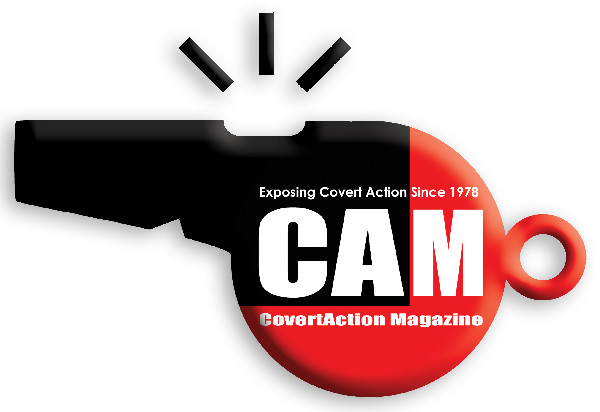
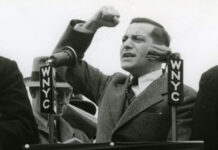


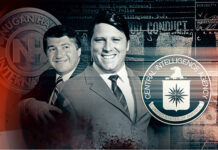


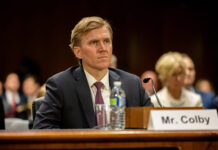
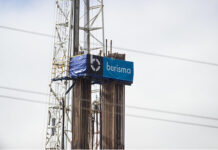

There are a lot of dictatorships in the world that I was completely unaware of as there is very little news coverage in the media about these dictatorships. Here are some examples, but no doubt there are many more.
https://hrf.org/latest/champion-of-the-forgotten-the-overlooked-dictatorships-of-cambodia-vietnam-thailand-and-laos/